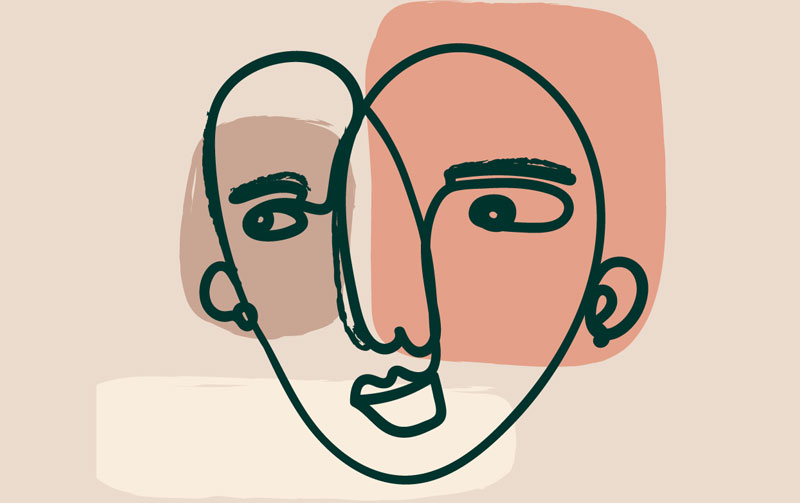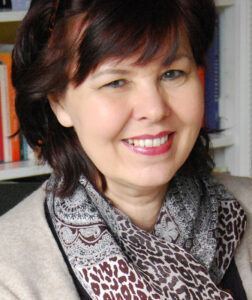Soul and Consciousness in Christian Mysticism
Author: Marion Küstenmacher
The Protestant theologian and author Marion Küstenmacher provides an insight into the non-dual mysticism of Christianity. For a long time Christian authorities vilified the representatives of it and punished them as heretics. However, this did not stop the mystics from dedicating themselves to the exploration of the soul, the ego and the transformation of their consciousness in order to free themselves from the clutches of ego and selfishness towards the vision of God and non-dual enlightenment.
BEGINNING OF THE EGO IN CHRISTIANITY
When reading medieval texts, one can shudder as soon as it comes to the ego. Heavily laden with sin, it was a reprehensible thing. All I, me, mine came from the devil. The false I had to humiliate, crucify, kill itself. To ascribe something good to oneself was vain and presumptuous. Salvation offered a life of obedience to church and authority. Modernity was about enlightening the ego and leading it out of self-inflicted immaturity.
The freedom project of the self-determined ego now included having to provide for one’s own happiness and salvation.
In the negative case, this led to the egocentricity of a purely worldly oriented, materialistic elbow society.
Having arrived in postmodernity, the ego now experiences itself as the only reliable point of reference in a world that has become fragmentary.
Out of necessity, it considers itself the navel of the world and demands that all its sensitivities be taken into account – a subjectivism that can turn into narcissism. Is the ego not reliable after all? Does it inevitably have to be supported by therapy in order to somehow come to terms with oneself and the world? Or do we not have an ego at all, is it a pure illusion, as Eastern schools teach? On the other hand, there is a growing field of scientific studies on the ego structure and its development. So one should see what psychology on the one hand and mysticism on the other hand can say together about ego, soul, witness and true self.
 © Adobe Photostock
© Adobe Photostock
DEVELOPING A HEALTHY ADULT EGO
We are identified with the ego in the manifest state of our everyday waking consciousness. It establishes around the age of two to three. Some people can even remember the unforgettable moment of this ego-birth, for example the poet Jean Paul (1763-1825). To him, as a little boy, the realization “I am an I” flashed into his consciousness like a “ray of lightning from heaven”: “There my I had seen itself for the first time and forever.”
As a kind of organizer or director of our personality, the ego evaluates, bundles and processes information, feelings, experiences, memories. It is an acting agent whose task is to produce a coherent sense in relation to one’s own experience. Thanks to this integrative effort, a stable bond is established in the ego-feeling, which is called “selfing”. The ego, moreover, can view itself as both subject (the cognizing part in me, “I”) and object (the part in me to be cognized, what I think about myself, “mine”).
EXPLORING THE SUBTLE REALM OF THE SOUL
Admittedly, this involves bringing into play deeper individual and collective layers that the everyday ego cannot readily control. Paul distinguished the ego (the natural man concerned with worldly things) from the soul (the spiritual man concerned with spiritual things). Meister Eckhart (1260-1328) spoke of the ego as the “outer man” and the soul as the “inner man turned inward.” An indeterminate but not suppressible presentiment of the I opens the access to the inside – as the Sufi mystic Rumi (1207-1273) poetically describes it:
“Where did I come from, and what is expected of me?
I have no idea.
My soul comes from somewhere else, of that I am sure,
and to end there is my goal.
This drunkenness began in another tavern.
As soon as I get back to that place,
I will be completely sober.
In the meantime, I’m like a bird from another part of the world,
sitting in this birdcage.
The day is approaching when I will fly away –
but who is that just now in my ear,
who hears my voice?
Who says words with my mouth?
Who looks around with my eyes?
What is the soul?
I cannot stop asking.
Whoever brought me here,
will have to put me back.”
C.G. Jung aptly refers to the soul as “that living thing which we feel distinctly or indistinctly as the ground of our consciousness, or as the atmosphere of our consciousness.” This distinction helps to loosen the strong bondage to the ego that sits in the cage of the manifest world.
DISTORTIONS IN SOUL & EGO WORK
It is problematic if during this strenuous soul work the integrating and transforming does not succeed in a balanced way. The soul is then stuck in anti-attitudes and fights its outwardly projected shadow. It can also react allergically to the whole manifest world. Then it demonizes the ego in an exaggerated way, while at the same time it exalts everything soulful and spiritual. This produces either feelings of guilt when one realizes that one cannot “leave the world” enough, or alienation from all who do not want to follow a spiritual path. This distorts the transition into the subtle realm of the soul, and the ego realm of the “outer man” is not adequately appreciated and taken along. The mystic Mechthild von Hackeborn (1241-1298) gave the following advice for this delicate phase of spiritual development:
“If anyone finds anything reprehensible on the face of his soul, wipe it off with the tender cloth of Christ’s humanity.”
Under no circumstances should one be too hard on oneself or bitter in the process, but should always be aware of divine goodness, because otherwise “one tears more than it heals.” The right measure for a coherent self-correction is the philanthropy of Jesus, on which the soul should meditate at length. Thus, a sober-realistic self-perception in the subtle comes together with the possibility of an imitatio christi, the striving to imitate Jesus more and more.
Souls Work
Thus, the soul is not a fixed entity, but a human transformation potential that helps the ego to transcend itself. So, it is created hybridly as a relational integrating organ of many soul tapes, which connect our individual sensations with the all-embracing (ground of being, divinity, cosmos of spirit, zero point field …). The soul surely functions as a kind of connecting node or as a “heat stream” (Joseph Beuys), which creates interactions between the cosmic-evolutionary world whole and the ego construct in the middle of our inner being. With the help of the soul probe, one’s own ego irrevocably links to the absolute spirit, indeed. Because it forever strives to”higher formations of the good, the true and the beautiful” (Ken Wilber).
 © Adobe Photostock
© Adobe Photostock
NO EGO
The ultimate detachment from ego, soul, and even the inner witness ultimately leads to the “isness or uniqueness of God” (Meister Eckhart):
With the definitive end of the final subject-object separation, an immeasurable, boundless opening of consciousness takes place.
I give a few examples from Christian mysticism to demonstrate. Jan van Ruysbroec (1293-1381): “In my essential being I am God by nature. For in God there is no distinction. With this God I am one, and I am even what He is.” What’s more with Gerlach Peters (1378-1411): “From his looking and from my looking becomes the looking. In it and with it I look, but not after my way [ego, soul], I look at God as God looks at himself.” Furthermore Meister Eckhart: “The eye with which I look at God, it is the same in which God sees me. My eye and God’s eye, it is one eye and one seeing and one knowing and one loving … God and I, we are one”. And finally Juliana of Norwich (1342-1413) put it this way:
“Behold, I am God! I am in all things! I do all things!”
Catherine of Genoa (1447-1510): “My I is God. I know no more I than only my God. It is no longer a matter of union, for I do not see what is to be united. I do not know where my I is, nor do I seek it. God became man to make me God, so I want to be entirely his spirit.” Ken Wilber testifies to the same thing: “I see the world as God, the Godhead, the Spirit sees it. The whole cosmos arises in the eye of the Spirit, … in my own inner being.”
I AM
Accordingly the absolute spirit recognizes itself in the midst of human consciousness in its totality. The non-dual unity experience of God and man uniquely grasps the core of our essence of being. Now one absolutely knows that God is that single “I AM” within me. This was the experience and gospel of Jesus:
“I AM the way, the truth and the life! I and the Father are one.” (John 17:10)
There is only the “God-shaped” I AM beyond space and time, without beginning and end, as the only subject that ever existed, exists or will exist. Therefore “I AM WHO I AM” (Exodus 3:14) is the hidden revealed name of God in Judaism and Christianity – so it could not be clearer. The Jewish-Christian philosopher Simone Weil once said that only God has the right to say “I AM” in me.
 About the author
About the author
Marion Küstenmacher, Protestant theologian and Germanist, in 2010 she received the Argula-von Grumbach Award for a paper on Sophia Wisdom. Author of numerous books on personality development, integral spirituality and mysticism. Among others God 9.0, The Purple Diver, Integral Christianity and currently My Flying Carpet of Spirit.
This article was originally published in the German Issue of Tattva Viveka No. 86: Vom kleinen Ich zum großen ICH BIN




